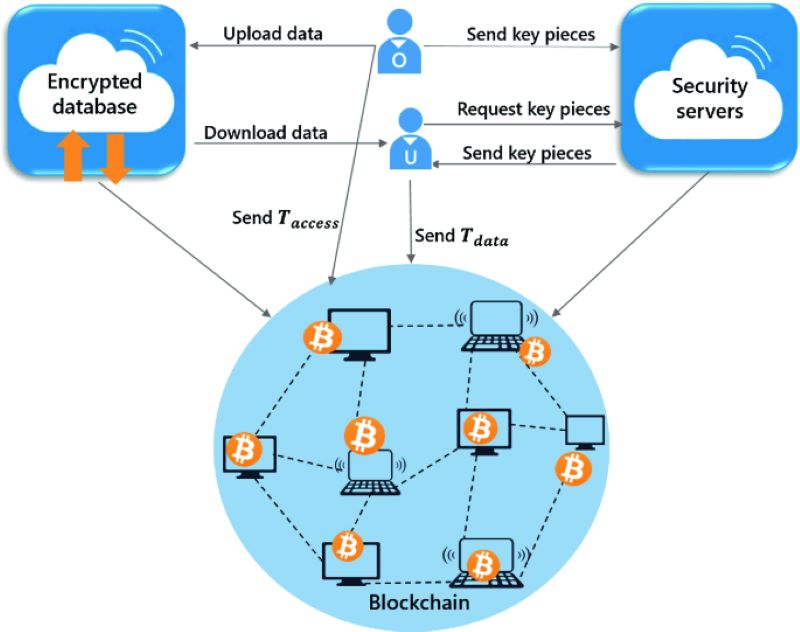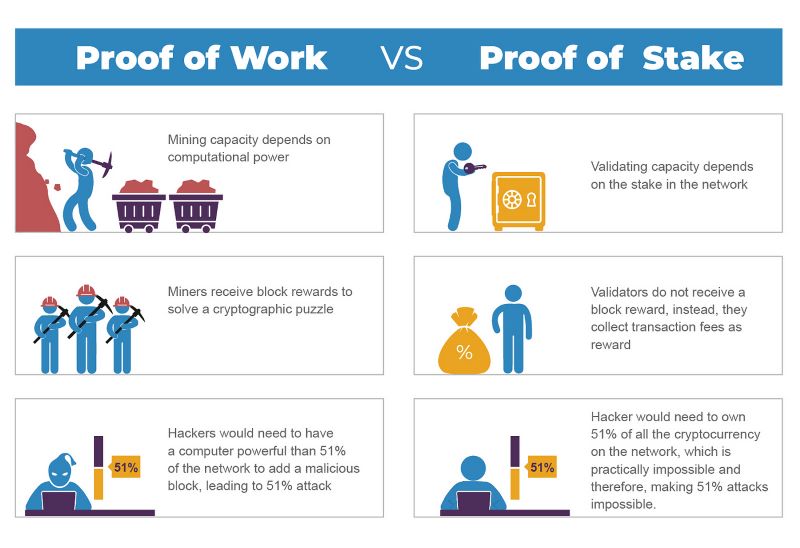Blockchain Consensus Algorithms: Unlocking the Foundations of Trust
Ever wondered how blockchains stay secure? It’s all about What is blockchain consensus algorithm. These are rules making sure all transactions are agreed on without cheats. They keep crypto networks honest and trustful, acting like a digital roundtable where every player has a say. From Bitcoin’s famed Proof of Work to the newer Proof of Stake, these algorithms pave the way for a future where trust is built into code, not just promised. Join me as we dive deep into their workings and why they’re the bedrock of all things crypto.
Understanding the Core of Blockchain Consensus Mechanisms
The Role of Consensus in Distributed Ledger Technology
In a world where we can’t always meet face-to-face, we still need to agree on things, especially when it comes to money. That’s where blockchain comes in – it lets us agree on who owns what, all without needing a middleman. This is vital in our digital coin world. Now, how do we make sure no one’s cheating or making coins appear out of thin air? We use a system that everyone trusts, called a blockchain consensus mechanism.
So, what is a consensus mechanism? It’s like when you and your friends decide where to go out to eat, but way more complicated. Here, each computer in a network agrees on a set of rules. These rules make sure new info on the blockchain is real and follows the system. This way, no single computer can control the ledger or fudge the numbers.
Key Principles Behind Crypto Networks Agreement
Crypto coins, like Bitcoin, work on trust. To earn that trust, their systems must solve a few tough puzzles. The main one: how do we agree on a single truth when no one is in charge? This problem gets its solution through blockchain consensus mechanisms, which are clever ways to get a whole lot of computers to agree on something.
Take Bitcoin, for example. It uses a popular method called Proof of Work (PoW). This makes computers solve hard math puzzles to prove they did the work to add new blocks of deals to the ledger. The first to solve the puzzle adds the block and gets some new coins as a prize. This keeps everyone honest since lying would mean doing a lot of work for nothing.
There’s also Proof of Stake (PoS). With PoS, the more coins you have, the more say you get in adding new blocks. You put your coins on the line to show you’re not going to mess with the ledger. If you try to cheat, you lose your coins. It’s like betting on yourself to keep it clean.
We can’t forget about Byzantine Fault Tolerance (BFT). BFT’s a bit like having backups for your backups. It deals with the question: how do we keep going even when some players are no good? In simple words, it can handle some bad apples in the group and still work right.
All these methods – PoW, PoS, BFT – they’re about balance. They each fight against that sneaky double spend problem, where someone tries to spend the same digital dollar twice. They make sure everyone plays by the same rules, whether they’re in Timbuktu or Toronto. This keeps our deals safe and sound.
Now, why does all this matter to you? Think of it as building a digital town square where we can all meet up, swap goods, and not worry about someone running away with the cash box. That’s what these blockchain systems do. They lay down the law of the land so we can trade and trust, no matter where we are. And sure enough, that’s what keeps this whole new digital dollar world spinning.
The Most Influential Consensus Models: PoW vs PoS vs BFT
Proof of Work (PoW) and Its Pioneering Impact
Think of Proof of Work (PoW) like a really tough puzzle. It’s the old way to make sure everyone agrees on what’s happening in a blockchain. When Bitcoin first started, it used PoW to keep track. It’s simple: do hard math problems to prove you worked hard to add a new block. This work makes the network safe because it’s too hard for bad actors to change things.
Mining is where people solve these puzzles. It takes lots of computer power and energy. This has some people worried. They say it uses too much electricity. But the thing is, PoW was the first to show we can trust a big system without one person in charge.
But because of the huge energy use, lots of folks are looking for better ways.
Proof of Stake (PoS) and Byzantine Fault Tolerance (BFT): Advancing Beyond PoW
Then comes Proof of Stake (PoS). Imagine a lottery where your chances to win are based on how many coins you have. The more you own, the more power you have to add new blocks. This uses a lot less power than PoW.
Proof of Stake shakes things up. It relies on validators, not miners. If you own part of the currency, you can help run the show. Validators put their own coins at risk to back up their honesty. If they try to fool the system, they can lose their stake.
Byzantine Fault Tolerance (BFT) is kind of like having tons of backup plans. It’s super clever in making sure that even if some folks lie, the network can still run right. It’s about making the network safe even if some parts can’t be trusted.
These new ways don’t need much power. They make it easier for more people to take part in keeping the network honest. This is great for our planet and for making sure the network can grow.
In the end, PoS and BFT are big leaps from PoW. They might help blockchain do even more in the world while keeping it safe and clean. We’re on a path to making these tech wonders work better for us all, and that’s a journey well worth our time and smarts.
The Mechanics Behind Blockchain Validation Processes
How Hash Functions and Block Creation Foster Trustless Systems
Imagine keeping a secret in a locked box. In blockchain, hash functions are the locks. Now, these locks are unique. They make sure that once you put something inside the box, it changes if you try to mess with it. This means you can’t change a block of information once it’s added to the blockchain. No one has to trust anyone else because the math does the trust bit.
So, how does block creation work? It’s like a puzzle. Miners solve complex math problems to create new blocks. It’s a race, and the winner adds their block to the chain. Each block holds a hash of the previous block. This forms an unbreakable chain of blocks.
When it comes to trust, imagine a town where everyone keeps an eye on each other. That’s what happens in blockchain. Everyone watches to make sure all is fair. This way, you don’t need a bank or police to keep the peace. Everyone in the network helps to keep things in check. That’s what we mean by trustless. You rely on the system, not people.
The Critical Function of Validators and Peer-to-Peer Network Validation
Now, let’s talk about validators. They are like the neighborhood watch of the blockchain. Validators check transactions to make sure they are legit. Think about when kids trade stickers. They show each other what they have to make sure no one gets tricked. Validators do something similar. They check the trades, or transactions, on the blockchain.
If most validators give a thumbs up to a block, it gets added to the chain. This peer-to-peer network validation helps keep the blockchain secure. There’s no boss in charge. Instead, everyone works together to agree on what’s right. It’s like having a big group of friends help you decide on a fair trade.
This method stops someone from spending the same money twice. Known as the double spend problem, it’s a big deal in digital cash. Validators prevent this by keeping an up-to-date record of all transactions. They make sure each coin is only spent once.
In short, this whole system allows strangers to trade with trust in the technology, not each other. That’s the magic of blockchain consensus. It lets us agree without meeting, trading without fear, and sharing without risk. This is the force that powers crypto networks and keeps your digital money safe.
Challenging the Status Quo: Scalability, Governance, and Hybrid Models
Addressing Scalability Through Innovations in Sharding and Cross-Chain Consensus
Blockchain fans know well the scalability crunch. As more folks join the party, transactions can slow to a crawl. But fear not! Bright minds have set to work, crafting clever fixes to keep things zipping along. One standout fix is “sharding.”
In essence, sharding splits the blockchain into smaller pieces. Each bit can process its own transactions. This means more deals can happen at once, without causing a jam. It’s like opening more checkout lines at a super busy store.
Cross-chain consensus is another shiny tool in the toolkit. It allows different blockchains to talk to each other. This is big. It means they can share work and spread the load. Think of it as carpooling on the blockchain freeway, easing up rush hour traffic.
In these ways, we break the chains of old limits. We pave the way for a blockchain boom, ready to handle the masses.
The Role of Governance and Hybrid Consensus in Cryptocurrency Networks
Now, let’s chat about steering the ship—governance in blockchain. In real life, who gets to call the shots? Usually, it’s those with a say in how things run. It’s the same in the crypto world.
Hybrid consensus models are like a mash-up of a band and an orchestra. They mix the free jazz of Proof of Work with the composed conductor of Proof of Stake. Together, they make a fresh kind of consensus music. Think of it as getting the best of both worlds.
Hybrids let us take what works from different systems and make something special. They can help keep the blockchain fair and secure. And let’s not forget, they can be pretty nifty when it comes to saving energy.
Through these models, governance is shared, not owned. Every person with a piece of the pie has their voice heard. It’s like everyone having a seat at the big dinner table.
With sharding, cross-chain talks, and hybrid models, we’re building a better blockchain future. And by “we,” I mean all of us—working together to create a world that’s quick, fair, and full of trust.
We’ve explored the heart of blockchain: how it finds agreement, or consensus, across many computers. We dug into consensus in tech that spreads data wide — no one owns it all. Key ideas let crypto networks say “yes, we agree” without a boss.
We compared big consensus types: Proof of Work (PoW), Proof of Stake (PoS), and BFT. PoW started it all, but PoS and BFT push past, aiming for better.
Then, how do blockchains make sure all is correct? Hashes mix data up to keep it safe. We make blocks with these hashes that no one fakes, backed by trustless checks. Validators and mates share the task, making sure all stays straight.
Lastly, we hit snags — like keeping things fast and making big choices. How do we scale? Splitting data up and joining chains can help. And who gets a say? Hybrid models mix rules to guide us right.
My final word? These tech bits matter. They’re the gears of a crypto clock, ticking toward a future where trust is math, not just a handshake. Let’s keep our eyes peeled as this tech moves on. It’s changing our world, one block at a time.
Q&A :
What Is a Blockchain Consensus Algorithm?
The blockchain consensus algorithm is a vital mechanism used in blockchain networks to achieve agreement on a single data value or a single state of the network among distributed processes or multi-agent systems, such as cryptocurrency transactions. This consensus ensures that all participants have a consistent view of the ledger, which is essential for the integrity and security of the network.
How Does a Blockchain Consensus Mechanism Ensure Security?
Blockchain consensus mechanisms enforce security by ensuring that each block added to the blockchain is the one and only version of the truth, agreed upon by all nodes in the network. They prevent fraud and malicious activities by making it extremely difficult for an attacker to alter any aspect of the blockchain without being detected by others in the network.
What Are the Most Common Blockchain Consensus Algorithms?
The most common blockchain consensus algorithms include Proof of Work (PoW), Proof of Stake (PoS), Delegated Proof of Stake (DPoS), and Practical Byzantine Fault Tolerance (PBFT). Each of these has a unique way of reaching consensus and differs in terms of energy consumption, speed, scalability, and degree of centralization.
What Are the Differences Between PoW and PoS?
Proof of Work (PoW) and Proof of Stake (PoS) are two different types of consensus algorithms that serve the same purpose of validating transactions and ensuring immutable agreement within the blockchain. PoW requires a considerable amount of computational power to solve complex mathematical puzzles, while PoS involves validators who are chosen to create new blocks and confirm transactions based on the number of coins they hold and are willing to “stake” as a form of collateral.
How Do Consensus Algorithms Affect the Scalability of a Blockchain?
Consensus algorithms play a crucial role in the scalability of a blockchain. For instance, algorithms like PoW may limit the scalability due to their high energy and computational requirements, whereas PoS and its variations tend to provide higher scalability because they require significantly less resources, allowing for faster transaction processing and higher transaction throughput.



